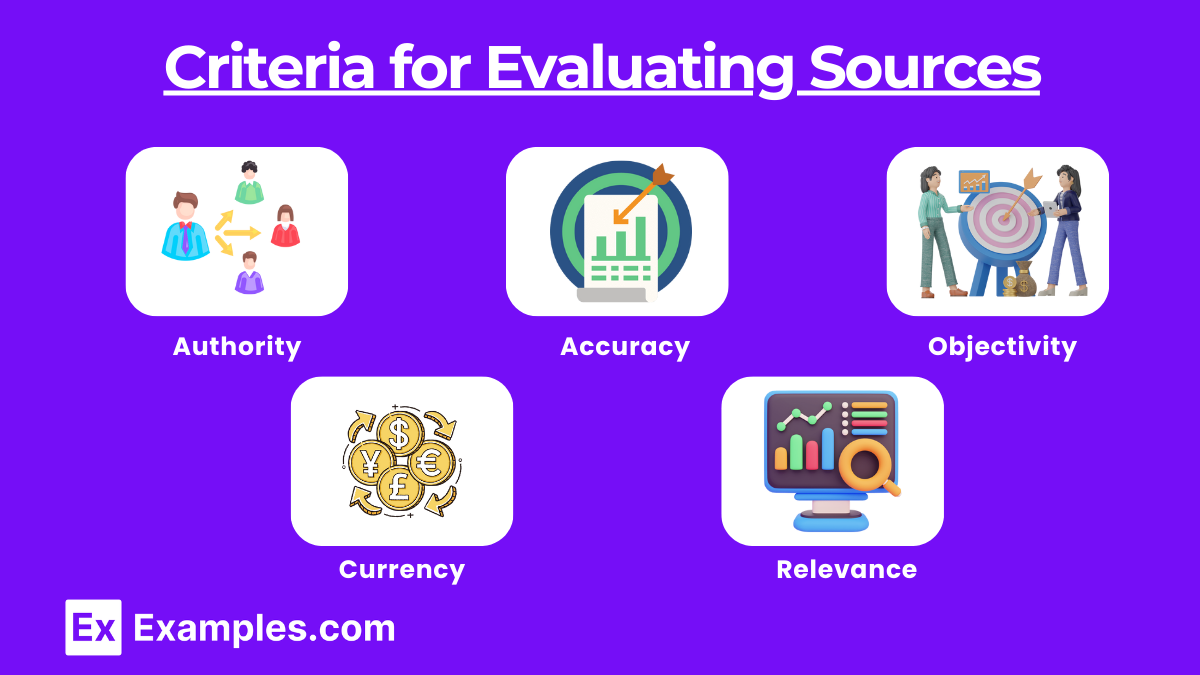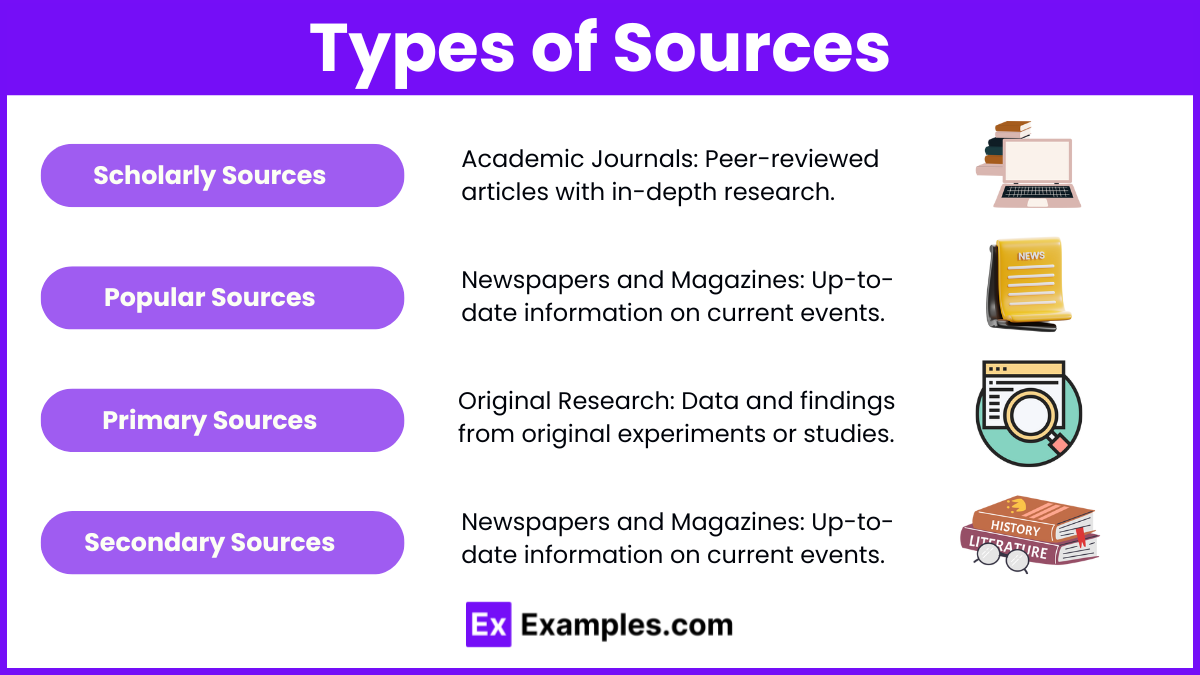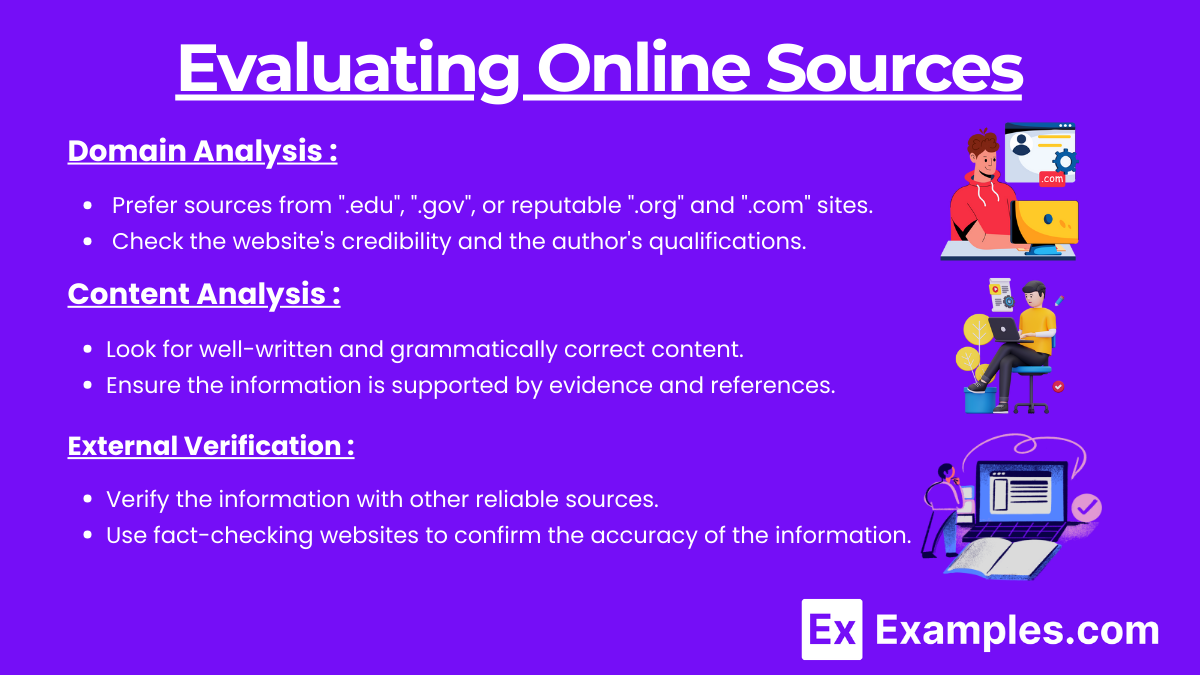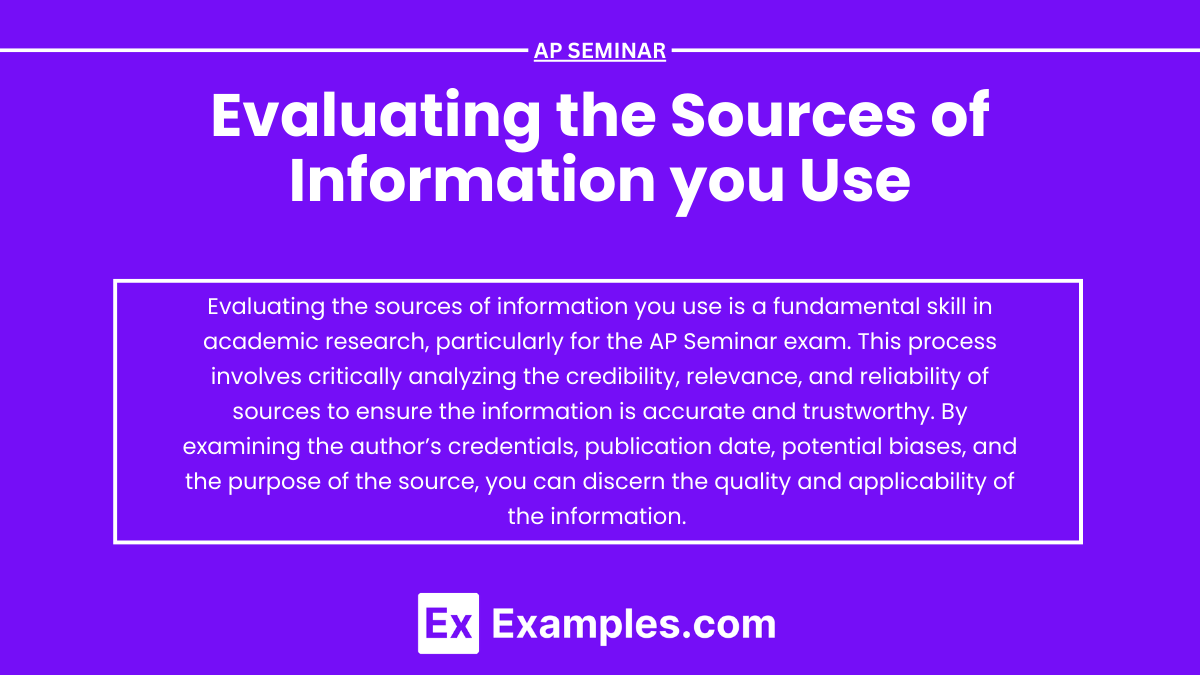Evaluating the sources of information you use is a fundamental skill in academic research, particularly for the AP Seminar exam. This process involves critically analyzing the credibility, relevance, and reliability of sources to ensure the information is accurate and trustworthy. By examining the author’s credentials, publication date, potential biases, and the purpose of the source, you can discern the quality and applicability of the information. Effective evaluation of sources not only strengthens your arguments but also upholds the integrity and rigor of your research.
Learning Objectives
In studying "Evaluating the Sources of Information You Use" for the AP Seminar exam, you should learn to assess the credibility, relevance, and reliability of various sources. This involves understanding the author’s credentials, identifying bias, verifying facts, and ensuring the timeliness of the information. Additionally, you should be able to distinguish between primary and secondary sources, and evaluate online content critically. Mastering these skills will enhance your ability to construct well-supported arguments and maintain academic integrity in your research.
Criteria for Evaluating Sources

1. Authority
Author’s Credentials: Check the author's qualifications, such as education, experience, and expertise in the field.
Institutional Affiliation: Consider the reputation of the organization or institution with which the author is affiliated.
Publication Source: Evaluate the credibility of the publisher or the platform where the information is published.
2. Accuracy
Fact-Checking: Verify the information with multiple reliable sources.
Citations and References: Check if the source provides citations for the data and claims made.
Peer Review: For academic articles, determine if the source has been peer-reviewed.
3. Objectivity
Bias and Perspective: Identify any potential biases or perspectives that might influence the information.
Purpose: Understand the purpose of the source, whether it's to inform, persuade, entertain, or sell something.
Balanced Viewpoint: Look for sources that present multiple viewpoints or acknowledge counterarguments.
4. Currency
Publication Date: Ensure the information is up-to-date and relevant to your topic.
Timeliness: For rapidly evolving fields, prioritize the most recent information.
5. Relevance
Scope: Assess if the source covers the topic comprehensively.
Audience: Consider if the source is intended for an academic, professional, or general audience.
Applicability: Determine how the source contributes to your research question or argument.
Types of Sources

Scholarly Sources
Academic Journals: Peer-reviewed articles with in-depth research.
Books: Reputable books from established publishers.
Conference Papers: Research presented at academic conferences.
Popular Sources
Newspapers and Magazines: Up-to-date information on current events.
Websites: Information from reputable websites, preferably with ".edu", ".gov", or ".org" domains.
Blogs and Social Media: Be cautious and evaluate the credibility of the author and platform.
Primary Sources
Original Research: Data and findings from original experiments or studies.
Historical Documents: Original documents such as letters, speeches, and official records.
First-Hand Accounts: Eyewitness accounts and interviews.
Secondary Sources
Reviews and Critiques: Analysis and interpretation of primary sources.
Literature Reviews: Summarize and synthesize existing research on a topic.
Textbooks: Provide comprehensive overviews and explanations of topics.
Evaluating Online Sources

Domain Analysis
Domain Type: Prefer sources from ".edu", ".gov", or reputable ".org" and ".com" sites.
Website Reputation: Check the website's credibility and the author's qualifications.
Content Analysis
Quality of Writing: Look for well-written and grammatically correct content.
Supportive Evidence: Ensure the information is supported by evidence and references.
Design and Functionality: Evaluate the website's design and ease of navigation.
External Verification
Cross-Verification: Verify the information with other reliable sources.
Fact-Checking Websites: Use fact-checking websites to confirm the accuracy of the information.
Importance of Evaluating Sources
Evaluating sources is crucial for multiple reasons. Here's a detailed list highlighting the importance:
Ensures Credibility:
Confirms that the information is provided by reputable and authoritative sources.
Helps to trust the accuracy of the information.
Enhances Relevance:
Ensures the information directly relates to your research question or topic.
Prevents the inclusion of irrelevant data that can dilute your argument.
Identifies Bias:
Recognizes any potential biases or perspectives that might influence the content.
Allows you to present a balanced argument by considering multiple viewpoints.
Maintains Accuracy:
Verifies that the facts and data are correct and supported by evidence.
Cross-checks information with multiple reliable sources.
Supports Academic Integrity:
Avoids the use of misinformation and unverified claims.
Upholds the standards of academic research and writing.


